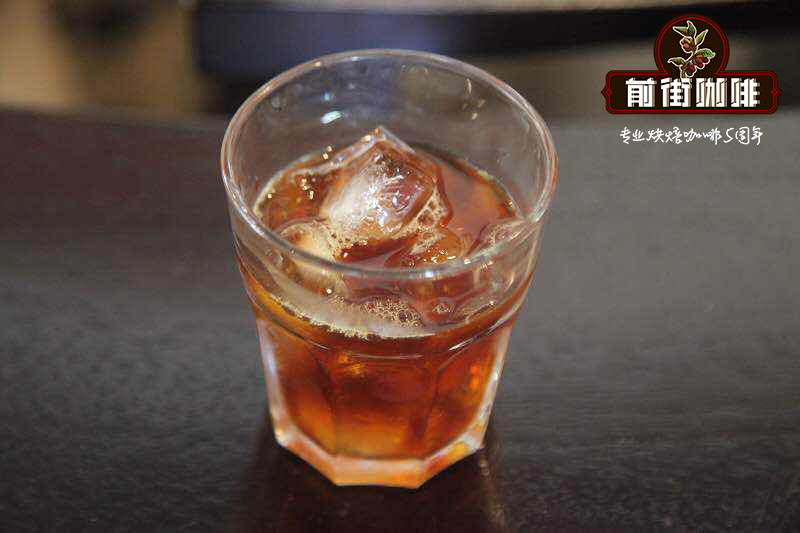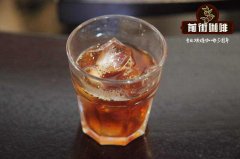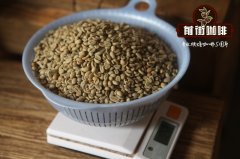What are the brands of coffee in Sumatra, Indonesia? What is the taste of Java coffee beans tested in the cup?

Professional coffee knowledge exchange more coffee bean information please follow the coffee workshop (Wechat official account cafe_style)
What are the brands of coffee in Sumatra, Indonesia? What is the taste of Java coffee beans tested in the cup? How to brew just tastes good?
Among the coffee-producing countries, Indonesia is a very noteworthy one. Indonesia is an island country in the Indian Ocean, the islands are distributed on both sides of the equatorial line, of which three islands: Java, Sumatra, Sulawesi, produce the world's important coffee. In the mid-17th century, the Dutch brought coffee trees to Ceylon (Sri Lanka) and Java, Indonesia. In the 18th century, Indonesia became a major producer of coffee, and almost all of its high-quality Arabica coffee was supplied to Europe. But by the 19th century, coffee rust, which appeared in Ceylon in 1869, also affected Indonesia. By 1877, most of the coffee fields on the Indonesian islands were damaged by rust, and the Dutch had to import other coffee varieties from Africa, that is, robusta coffee. It is more resistant to diseases and insect pests, but its quality is inferior. About 90 per cent of Indonesian coffee is robusta beans, about 6.8 million bags a year, and less than 10 per cent of beans are Arabica coffee.
Java coffee produced in Java, Indonesia, originally belongs to Arabica coffee. Diseases and insect pests make Java, which is rich in high-quality Arabica coffee, switch to Robusta coffee for fear of diseases and insect pests. Arabica Java coffee, which people regard as a treasure, has been out of sight ever since, and people's unlimited favor and pursuit of Java coffee has been lost ever since.
Indonesian coffee is graded according to the proportion of defects, which is divided into 6 grades, with G1-- G6, G6, and G1 being the highest. Java coffee beans are collected and washed.
Java Arabica coffee has a wonderful fruit flavor, with a BlackBerry and grapefruit flavor, is a favorite of many coffee glutton. This coffee has an excellent medium purity, crisp and refreshing taste. It has a fresh flavor and is most suitable for drinking iced coffee in summer. When tasting this coffee, if paired with fruit with acidity such as grapefruit, it will certainly give you the best coffee experience.
The bitterness and mellowness of Java coffee, coupled with the sweetness of chocolate syrup, make Java coffee more mellow and smooth.
Dry fragrance: full-bodied and thick, with sweet aroma of nuts
Wet fragrance: nutty aroma, special tobacco aroma
Flavors: BlackBerry, chocolate syrup and grape sweetness, clear balance of acidity and bitterness.
Indonesian coffee-smelling, low acid, good mellow
At the end of the 17th century, the Dutch East India Company transplanted Indian Arabica trees to Jakarta on the island of Java. Due to the favorable climate and soil, Arabica quickly spread to Sumatra in the northwest of Java and Sulawesi, another large island in the northeast. However, in the 1880s, when serious leaf rust broke out in Java and Arabica withered, the Dutch switched to the case-resistant Robusta species to stabilize Indonesia's coffee industry. To this day, Robusta is still the main coffee in Indonesia, accounting for 90% of Indonesia's coffee production, distributed in the low-altitude areas of Java and Bali. The elegant Arabica is mainly distributed in the higher elevations of northern Sumatra, Sulawesi and Java, accounting for only about 10% of Indonesia's coffee production, but the reputation of Mantenin, Golden Mantenin, Lake Lake Tawar, Gayo Mountain, Ache, Sulawesi, Old Manning and Old Brown Java has made Indonesian coffee famous in the boutique world for decades. Not dragged down by other inferior Robusta species.
Mandheling seems to be synonymous with Indonesian boutique coffee. In fact, Mandheling is neither the name of the Indonesian place name, the name of the producing area, the name of the port, nor the name of the coffee variety, but a mispronunciation of Mandaining, an ethnic group that used to live in Sumatra. (for details, please refer to the recommended bibliography-Coffee) according to textual research, Mandaining is a direct descendant of the Batak, who is good at growing coffee. The truth is that the people who still grow coffee in the mountains of north-central Sumatra are the Bhatta, not the Mandaining, let alone the Mandaining.
Sumatra is the main producing area of Indonesian boutique coffee beans, and the coffee system is very complex. According to the book introduction, it can be divided into four types:
(1) Mantenin refers to the most famous half-sun or sun-dried beans around Lake Toba (Lake Toba) in north-central Sumatra and the Lindong Mountains (Lintong) at an altitude of 900-1200 meters above sea level on the southwest coast. The Batak is the backbone of coffee farmers in this area. It has the unique fragrance of herbs and trees.
(2) Golden Manning, after four times of manual screening, is higher than the average Manning. Mellow and bright, good sweetness.
(3) Lake Tawa coffee refers to washed, semi-washed or sun-dried beans (less) near Lake Tawa in the northernmost part of Sumatra at an altitude of 800m to 1600 m above sea level. The sour smell is bright, and the stuffy fragrance is not obvious. The taste of "Sumatra Axie Gold" (Sumatra Ache Gold) has the classic fruit sweetness of Raminita, with obvious peach and almond flavors and soft acidity, which is unique to Indonesia.
(4) Old Manning, tastes as sweet as honey and Java Old Brown. The ripening of aged beans takes about 2-3 years, which can be called kung fu beans. The color of aged beans is yellowish brown or dark brown, somewhat indecent, but the sweetness (sweetness) is excellent, and the aged Java Old Brown is better than aged Mantenin in sweetness, mellowness and cleanliness.
Small quantity, high quality, strong fragrance of flowers.-Sulawesi
The English words "Celebes", "Toraja" and "Kalossi" often appear on the sacks of "Sulawesi" coffee. "Celebes" is the old name of the island under Dutch rule, which has long been changed to Sulawesi; "Toraja" is not a place name, a city name, nor a variety name, but Toraja, an ethnic group good at growing coffee in the mountains of central Suvira, and the name of the island's boutique beans. And the above-mentioned Mandainin and Guao belong to the same people who are proficient in growing coffee; "Kalossi" is a small town in the middle of the island, Kalosi, is a centralized trading place for Toraja (Taroga) coffee beans.
Toraja (Taroga) is also a rare boutique bean in the world, with an annual output of about 1000 metric tons, distributed in the rugged slopes of about 1200 meters in the middle and southwest of Sulawesi. It is not easy to plant and harvest, with an average annual yield of only 300kg per hectare. Far lower than the average of more than 1000 kg in Central and South America. The three major estates in Toraja (Taroga) are: "PT Kapal Api" has 2000 hectares of coffee; "CSR" ranks second with 1100 hectares of coffee; and "Toarco Jaya" of Japan's "Key Coffee" is the third largest with 700ha. In other words, Toraja Toraja (Taroga) is more precious and rarer than Manning or Golden Manning.
Toraja (Taroga) is washed or semi-washed, with brighter acidity and layers than Sumatra's or Golden Manning. There is a strong caramel sweetness, but Tusao, sunwood and mellow thickness are much more convergent than Mantenin, with slightly floral aromas.
Qianjie recommended cooking:
Filter cup: Hario V60
Water temperature: 90 degrees
Degree of grinding: small Fuji 3.5
Cooking methods: the ratio of water to powder is 1:15, 15g powder, the first injection of 25g water, 25 s steaming, the second injection to 120g water cut off, waiting for the powder bed water to half and then water injection, slow water injection until 225g water, extraction time about 2:00
Analysis: using three-stage brewing to clarify the flavor of the front, middle and back of the coffee. Because the V60 has many ribs and the drainage speed is fast, it can prolong the extraction time when the water is cut off.
Important Notice :
前街咖啡 FrontStreet Coffee has moved to new addredd:
FrontStreet Coffee Address: 315,Donghua East Road,GuangZhou
Tel:020 38364473
- Prev

What are the flavor characteristics of Indonesian Java coffee? What is the variety of Java coffee? How to make and cook
Professional coffee knowledge exchange more coffee bean information please follow the coffee workshop (Wechat official account cafe_style) what are the flavor characteristics of Indonesian Java coffee? What is the variety of Java coffee? How to cook it to taste good? Java coffee is sometimes called Old Java. After the old government (the Old Government), Java coffee was guaranteed to be at least ten years old in the tropics.
- Next

[Sumatran Fine Coffee] West Java Coffee beans in Indonesia-Honey-treated Coffee from Frinza Manor
Professional coffee knowledge exchange more coffee bean information please follow the coffee workshop (Wechat official account cafe_style) [Sumatra boutique coffee] Indonesian West Java coffee beans-what are the flavor characteristics of honey-treated coffee beans from Frinza Manor? Wildan Mustof is the owner of the estate. In 2010, he and his wife Atieq first started in the Sindangkerta Weninggalih area.
Related
- Detailed explanation of Jadeite planting Land in Panamanian Jadeite Manor introduction to the grading system of Jadeite competitive bidding, Red bid, Green bid and Rose Summer
- Story of Coffee planting in Brenka region of Costa Rica Stonehenge Manor anaerobic heavy honey treatment of flavor mouth
- What's on the barrel of Blue Mountain Coffee beans?
- Can American coffee also pull flowers? How to use hot American style to pull out a good-looking pattern?
- Can you make a cold extract with coffee beans? What is the right proportion for cold-extracted coffee formula?
- Indonesian PWN Gold Mandrine Coffee Origin Features Flavor How to Chong? Mandolin coffee is American.
- A brief introduction to the flavor characteristics of Brazilian yellow bourbon coffee beans
- What is the effect of different water quality on the flavor of cold-extracted coffee? What kind of water is best for brewing coffee?
- Why do you think of Rose Summer whenever you mention Panamanian coffee?
- Introduction to the characteristics of authentic blue mountain coffee bean producing areas? What is the CIB Coffee Authority in Jamaica?

